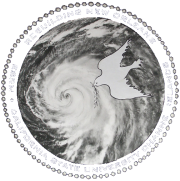Now Playing: “When You Get Back” – Jon Cleary & The Absolute Monster Gentlemen
I still feel New Orleans in me with a weight similar to a very full belly, a heavy presence that leaves me wondering if it might be embedded in my belly forever. At no other point in my life have 10 days gone by so quickly. Never before have I felt so fulfilled from an amount of work that felt so small, in context. There is a part of me that is New Orleans, an itch I can’t ignore, but can’t yet scratch.  I find myself wishing I’d brought more home. The voodoo doll from the French Quarter, cajun seasoning and sliced garlic from the cooking school (the vanilla bean extract was confiscated at the airport), bottle-cap framed ouija board from Dr. Bob’s, the “past cards” I’ll be sending away to parents and grandparents, the 3 CDs I acquired from musicians that inspired us all, the magnets on my fridge, the mud on the bottom of my suitcase, the crumpled up boarding pass in the front pocket of my backpack… I can put all these things in a pile in the living room but I can’t bring New Orleans home with me, at least not physically. I mean it honestly, though, when I say it’s a part of me forever.
I find myself wishing I’d brought more home. The voodoo doll from the French Quarter, cajun seasoning and sliced garlic from the cooking school (the vanilla bean extract was confiscated at the airport), bottle-cap framed ouija board from Dr. Bob’s, the “past cards” I’ll be sending away to parents and grandparents, the 3 CDs I acquired from musicians that inspired us all, the magnets on my fridge, the mud on the bottom of my suitcase, the crumpled up boarding pass in the front pocket of my backpack… I can put all these things in a pile in the living room but I can’t bring New Orleans home with me, at least not physically. I mean it honestly, though, when I say it’s a part of me forever.
New Orleans made me want to be a better musician. It made me want to forget the stupid little day-to-day things and focus on the important stuff. It made the “hard work” at home seem insignificant. I wanted to stay for a year and keep working, keep asking the locals to tell me their stories, keep learning about the history. I wanted to contribute. I learned things about gardening that I convinced myself I would re-create at home. I learned more about a history of a town with more stories than I could probably ever hear in one lifetime.
I did things I never thought I’d be able to do in less time than I would have ever imagined, like, for instance, when I was able to identify tree species by day 2, or hack through 100 meters of blackberry in an hour and a half. I got a taste of what strength really looks and feels like, and it was gone too fast. Does anyone know of any place around Ventura County where you can chop wood or hack at something with a machete, for recreation? Does anyone have anything invasive they need help tearing down? You have my number.
























